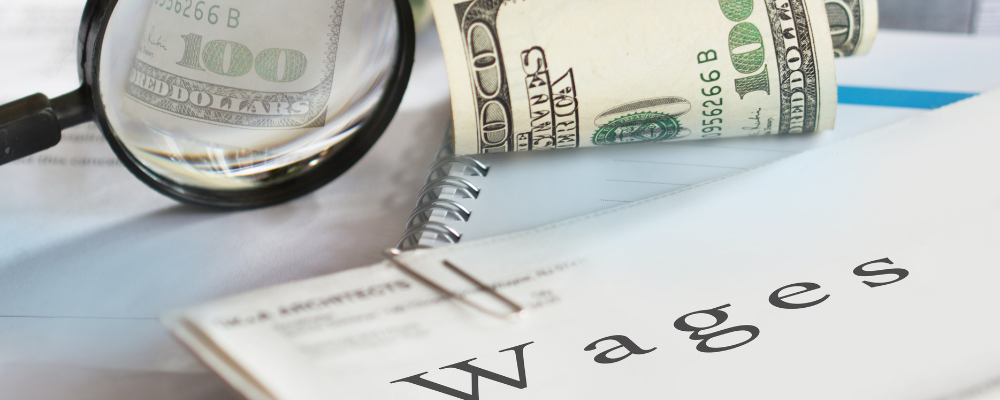How To Protect Yourself From Student Loan Wage Garnishment
When a student loan borrower stops making payments on their loans, the lender can use various legal means to try and recover the money. One way is to ask your employer to withhold part of your paycheck. This is known as student loan wage garnishment.
Lenders can collect about 15% to 25% of your disposable income as wage garnishment. Disposable income is the amount of money you receive in your paycheck after calculating applicable deductions. The exact amount that can be garnished depends on the type of loan you’ve taken.

Here’s what you need to know about student loan wage garnishment and how you can prevent it.
How student loan wage garnishment works
After 90 days of nonpayment of your federal student loans, the loans are considered delinquent. The delinquency will get reported and recorded in your credit report. Federal student loans go into default if the nonpayment extends beyond 270 days.
Private student loans go into delinquency and default much sooner. They are considered delinquent one day after the missed payment and default after 90 days of nonpayment.
There are several adverse consequences when your loan goes into default status. Your credit score gets damaged, the entire outstanding becomes due immediately, and your wages may be garnished to recover the money.
As part of the wage garnishment proceedings, the lender will request your employer to withhold a percentage of your monthly income. This goes towards paying back the overdue loan.
The federal government can initiate wage garnishment after 9 months of missed payments. They can legally ask your employer to deduct as much as 15% of your income directly from your paycheck. For some types of federal student loans, they can legally deduct up to 25% of your disposable income. For private student loans, the exact timeline may vary among lenders.
How To Get Out Of Student Loan Wage Garnishment
By law, the lender has you give you 30 days advance notice that they intend to initiate administrative wage garnishment. Even at this late stage, there are things you can do to prevent student loan wage garnishment.
1. Negotiate the repayment terms
Most lenders or collection agencies will allow you to enter into a voluntary repayment agreement. This agreement states that you will make the first payment within 30 days from the day the wage garnishment notice was sent. This can help you avoid garnishment but you must definitely make that first payment within the agreed-upon date. If you don’t, the repayment agreement becomes void.
2. Consolidate your loans
Combining one or more federal student loans into a direct consolidation loan can also help you avoid wage garnishment. When you consolidate your loans, you can choose to extend the loan term. This will lower your monthly payments, making them more affordable. You’ll end up paying more accrued interest over the longer term. It’s worth it though, as consolidation helps you get your loans back in good standing.
3. Consider rehabilitating your student loans
Loan rehabilitation involves making nine monthly payments over a period of ten consecutive months. You can work with your loan servicer to set the monthly payments. The monthly payments are usually set at 15% of your discretionary income divided by twelve.
4. Request a hearing
You may be able to request a hearing to stop your wage garnishment if you can submit proof of economic hardship. Or if you think the amount due is less than what the lender has quoted. Being employed less than twelve months after an involuntary job loss may also enable you to request a hearing. You must request the hearing on or before the thirtieth day of receiving the garnishment notice. If your request is successful, it will stop the wage garnishment for twelve months. That gives you some time to get your finances in order and arrange to start making those payments.
Once your loans get into default, the situation becomes so much more difficult to get out of. In addition to being stressful, it can quickly become expensive too, with late fees, interest and the collection agency fees.
Instead of looking for how to stop student loan wage garnishment, it’s far better to focus on avoiding student loan default.
Tips for avoiding student loan default
Consider refinancing your student loans. RaptorFi’s Student Loan Refinance Calculator can help you decide if that is right for you. Or, if you’re credit score has improved since you left college, you may qualify for a lower interest rate when you refinance. You can also choose to lower the monthly payments to make them even more affordable if finances are tight.
Apply for deferment or forbearance. Deferring your payments or entering forbearance allows you to pause payments temporarily. If you cannot afford the payments, speak to your lender about your deferment or forbearance options. These options are far better than getting into default.
Switch to an income-driven repayment plan. This third option applies only to federal student loans. The federal government offers several income-based repayment plans. These set your monthly payments to your income, so they are always affordable. The lower monthly payments will increase the loan term as well as the total interest that accrues. But it is still a far better option than dealing with default and student loan wage garnishment.
We hoped you enjoyed this article! Remember, you can and potentially lower your monthly student loan payments and save money.




